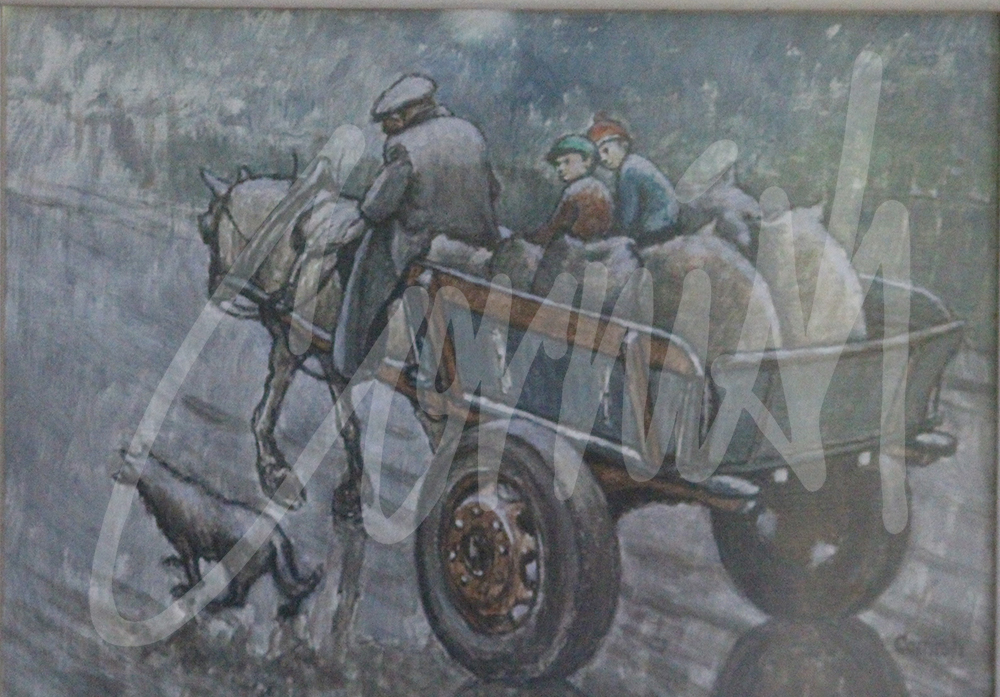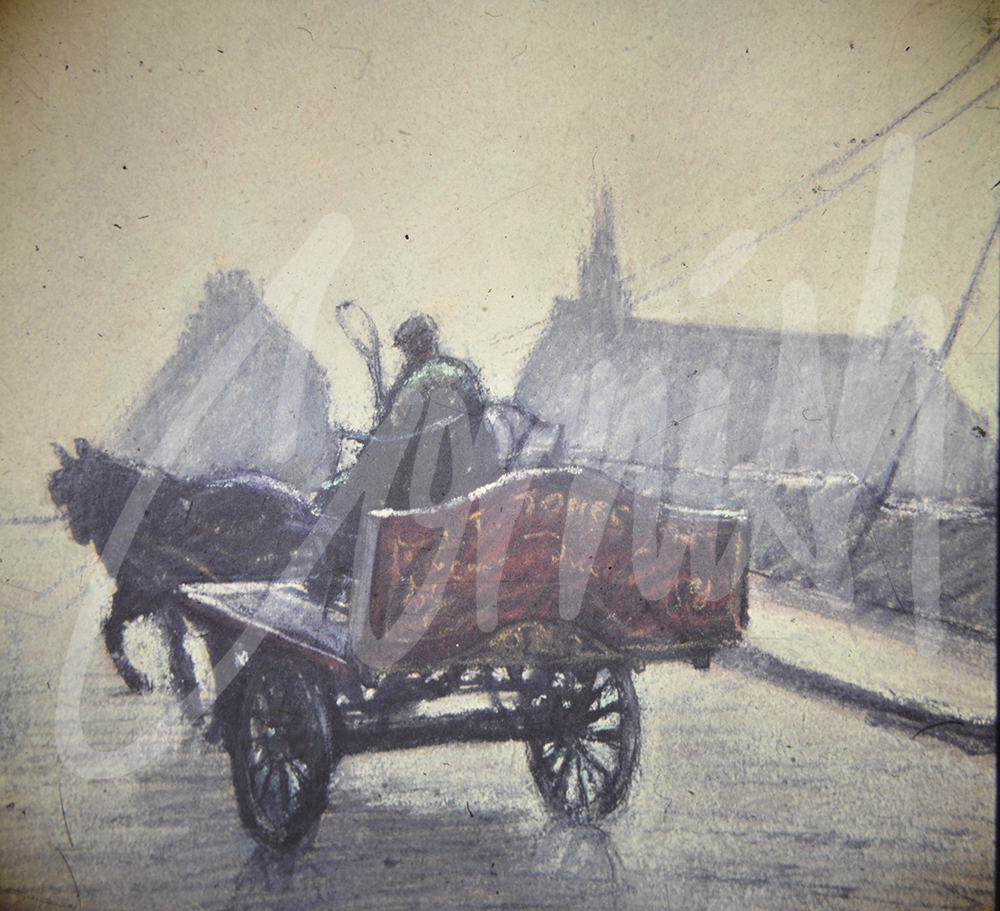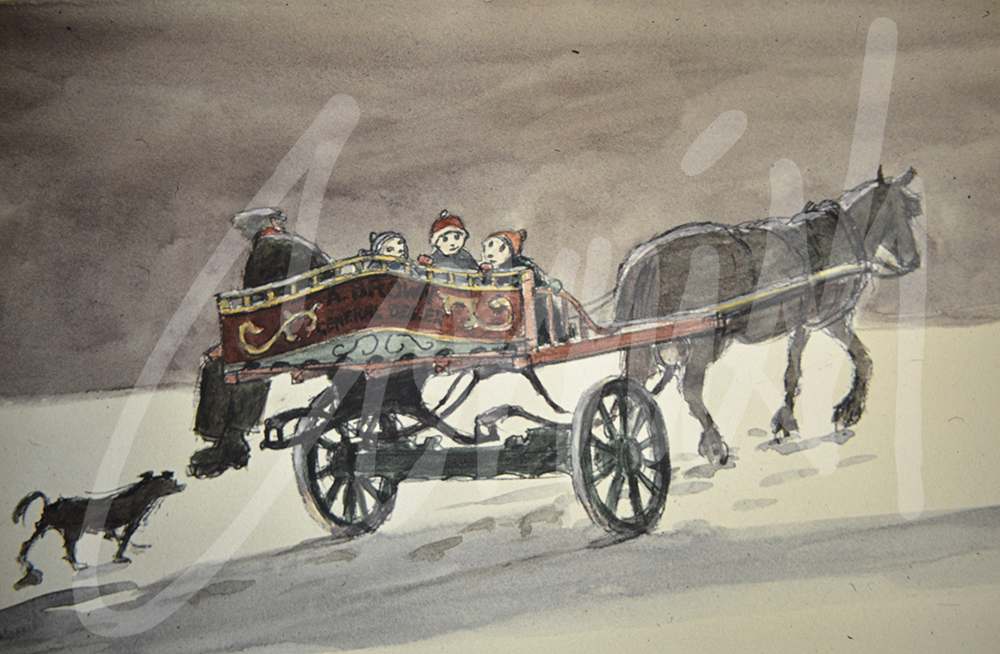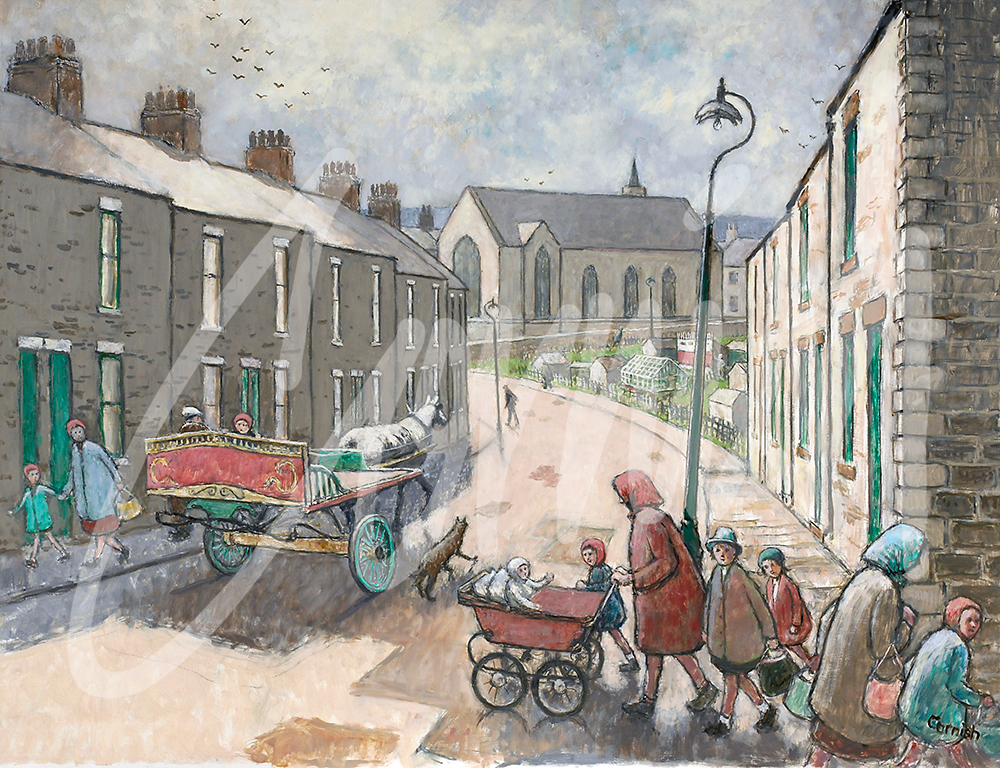
Latest News

Horse and Cart: The Rag and Bone Man
Cornish was aware of the contribution his work could make to both history and the sociology of mining communities. Although he was selective in the aspects of everyday life he recorded, his subjects are also a valuable historical resource beyond the world of art.
A horse and cart ‘the rag and bone man,’ was a regular sight on the streets of Spennymoor during the period chronicled by Cornish. In his own words:
“I have always believed that art is a form of communication and every picture has its own narrative”
He had an outstanding ability to quickly observe and record people in the most unlikely situations and the horse and carts seen in and around Spennymoor provide an excellent example. Sometimes they appear as subjects in their own right and on other occasions they are placed within street scenes as part of the natural inter-action between the subject and other people going about their daily lives at the same time.
His studio accumulated a significant collection of sketchbooks and scraps of paper, sometimes showing rapid drawings and often with written observations which clearly represent his thinking about his work at the time.
One classic example from many such papers is:
“In our memories and of course in history books, most so called ‘great events’ are usually well-recorded, but sometimes the ordinary things that happen in our lives are not considered extraordinary enough for comment. Yet things are often very important nevertheless, and sometimes give a reader a much better idea of the times than supposedly the great events.”
During the war years, touring theatre companies performed at the Everyman Theatre at The Spennymoor Settlement under the aegis of companies of the calibre of The Old Vic. One of the visiting actors was Wilfred Bramble, who was later to achieve fame as Albert Steptoe in Steptoe and Son, a sitcom about a rag-and-bone business illustrating a different slice of social history. For quiz enthusiasts the horse was called Hercules !
Other examples of street scenes may be found in Behind The Scenes: The Norman Cornish Sketchbooks, available from www.normancornish.com





